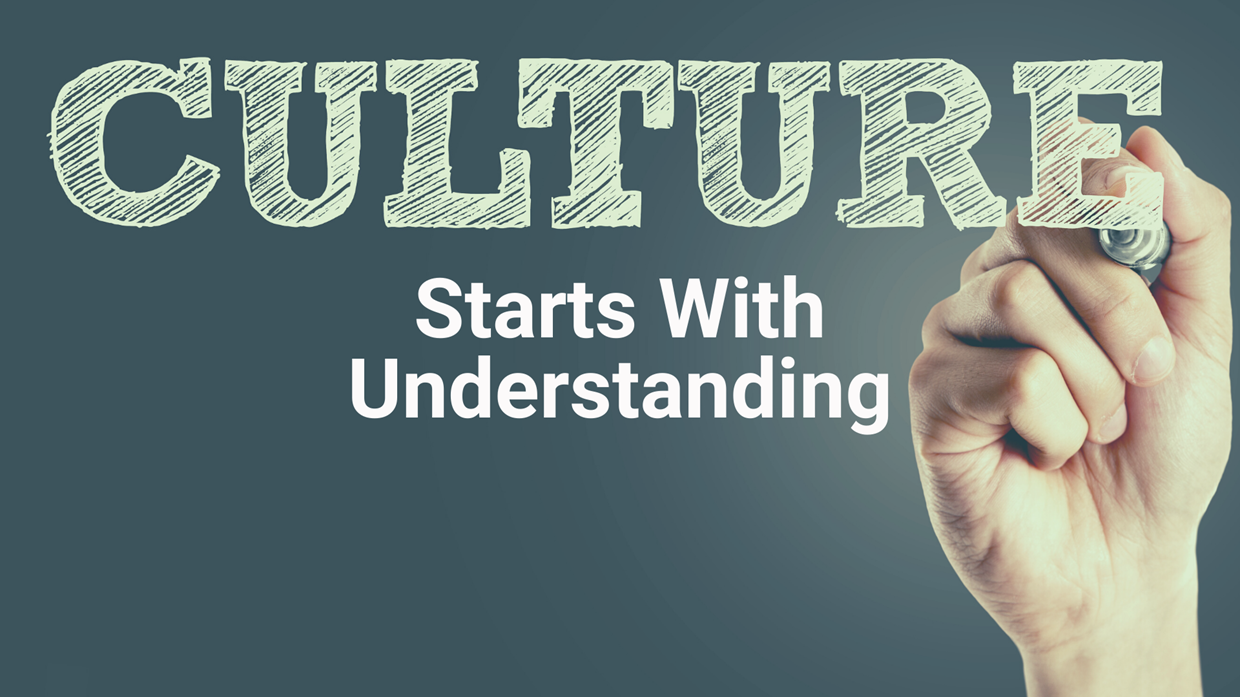I’ve always been struck by the number of organisations that I’ve met over the years that are wrestling with their own version of “our culture isn’t quite right”.
More often than not, it’s followed by a list of things that they would like to see more of — “I wish our people were more proactive”, “I wish our people were more creative”, “I wish people showed more initiative”, “we need to be more innovative”, “we need more collaboration", the list goes on…
The thing these statements have in common is that they’re all behaviour related and yet definitions and descriptions of organisational culture rarely make explicit reference to behaviour.
What is culture anyway?
It’s not terribly helpful that there isn’t a single or universally agreed definition of organisational culture — “the way we do things around here” being probably the most commonly used simplification.
“Culture is the way we do things around here.”And whilst no single definition exists, many good ones do. Edgar Schein, regarded as one of the foremost authorities on culture, defined it as being made up of three parts: artefacts, espoused values, and underlying assumptions.
Still no mention of behaviours.
Artefacts are things we’ve all too often come to see as the culture. They’re the tangible symbols of the companies we read about so frequently — the ping pong table, the dress code, and the free lunches. But it’s also the physical working environment, the posters reminding staff of the values, the clear desks at night.
Espoused values and beliefs are the things that you’ll often hear championed by the leadership… what they say the company believes — the mission statement (or “enduring purpose” as is increasingly popular to describe it), the core values, the employee handbook.
In practical terms, we might say that they represent a set of operating instructions for employees, reflective of the way they “want things to be done around here”… rather than “the way we do things around here”.
Underlying assumptions are a little more difficult to observe. These are the often unspoken, even unconscious determinants of attitudes, thought processes and actions… basically a set of learned beliefs about how things really work.
By way of quick example — ‘Revenue trumps everything else’ — would be an underlying assumption that might be established as a result of prolonged inaction against high performing sales people for behaviours that would otherwise be deemed unacceptable i.e. the rules don’t apply to these people…the implication would be that eventually everyone would assume that certain populations are untouchable, poor behaviour would be tolerated and most likely promote further bad behaviour.
There’s a lot to like about Schein’s articulation of organisational culture — the best thing being that it gives us a way of understanding and viewing most of what influences culture… or what a culture is made up of… but does it add up to what a company’s culture really is?
Surely what really matters is how all of those things manifest in the actions (or inaction) of the people in any business… the behaviours?
Isn’t that what the culture really is? Regardless of what we might wish for, what we like to imagine it being, or even believe it to be… culture is really only what actually happens as a result of (and maybe even in spite of) everything else.
Complicating factors
Codifying organisational culture isn’t easy… which is probably why there isn’t an agreed definition… but there’s a great deal missing from most attempts to define and measure culture — let’s call them ‘complications’
Complication 1 — Individuals make up the collective
Organisations are made up of people… a collection of individuals formed into groups that in aggregate and collectively makes up the whole — I realise this is stating the obvious, but it seems to be forgotten all too often.
Each of us brings our own unique perspective, interpretation and context into the workplace. Think of it as Schein’s model applied to a person… artefacts — our personal setting, symbols that we surround ourselves with, home life); espoused values — our personalised interpretation of a world view that we’re prepared to share with others; underlying assumptions — our beliefs and attitudes that result from our personal journey through life.
Then there’s the biological component — that each of us views the world slightly differently and responds biologically differently to it. What makes any one of us feel good or bad, excited or stressed is a unique combination of factors — basically meaning we all respond differently to our conditions.
Complication 2 — No single culture
In companies, we put all these things together into groups and in doing so create a unique blend of ingredients that most likely results in every organisation having multiple cultures not the single version that many like to imagine.
That our organisations have multiple cultures makes a great deal of sense too.
Firstly, the things that influence a function or group are different across the company — what’s expected of the people, the individuals that make up the team, the skills and traits required for the roles in the team, the management style, where they work, how they work together etc.
Secondly, we often want our functions to behave differently — control functions (risk, compliance, finance) may quite legitimately have very different cultures to those facing customers, in sales or involved in creative activities — it’s partly what creates the healthy tension required to keep things in balance.
Complication 3 — Culture is dynamic
If all of this complication isn’t enough, add to the mix that we must recognise culture as being dynamic rather than static and it’s not only much easier to see why it’s so difficult but also how woefully inadequate our tools and measures are currently.
The unique blend of ingredients that make up every group, in every function, in every organisation is also subject to influence from everywhere else… internally and externally.
How is the global pandemic affecting your people? You can be sure that it will be influencing (and most likely changing) the experiences, context and behaviours of every person in your company but not in a uniform way.
How about the secondary economic impact?
How about the events unfolding from the United States that are mobilising so many people demanding social justice and equality?
The dynamic nature of our environment and context makes our cultures far more dynamic than we often consider but because it’s difficult to see, it doesn’t mean we should stop looking.
Great culture starts with understanding
Few (if any) companies want a crappy culture, but it’s fair to say that some are more prepared than others to put the required effort and focus into cultivating conditions that will result in the best outcomes for all.
I’ve been sharing recently three questions that I think are largely unanswerable for most companies.
- What’s it really like to work here?
- What’s going on for the people that work in our company?
- How are our people doing?
As difficult as culture can be to get a handle on... it’s easy to see that these three questions would be hard to answer in any meaningful way using traditional means of periodic surveys and employee workshops.
It’s easy to imagine that these things will be different for different people in your business, and how they might be subject to change over short periods of time.
It’s also easy to recognise the significance that answers to these questions will have on the performance of individuals and groups across your business.
Wouldn’t it be better to know?





